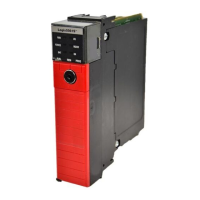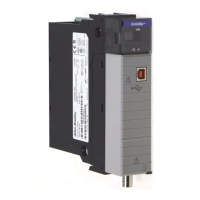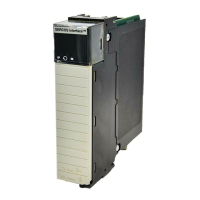68 Rockwell Automation Publication 1756-RM093J-EN-P - April 2018
Chapter 7 Monitor Status and Handle Faults
GuardLogix System Faults
Faults in the GuardLogix system fall into these three categories:
• Nonrecoverable controller faults
• Nonrecoverable safety faults
• Recoverable faults
For information on handling faults, refer to the GuardLogix Controllers User
Manual, publication 1756-UM020
, or the 1768 Compact GuardLogix
Controllers User Manual, publication 1768-UM002
.
Nonrecoverable Controller Faults
A nonrecoverable controller fault occurs if the controller’s internal diagnostics
fail. Partnership is lost when a nonrecoverable controller fault occurs in either the
primary controller or the safety partner, causing the other to generate a
nonrecoverable watchdog timeout fault. Standard task and safety task execution
stops, and Safety I/O transitions to the safe state.
Recovery from a nonrecoverable controller fault requires a download of the
application program.
Nonrecoverable Safety Faults
In the event of a non-recoverable safety fault, the controller logs the fault to the
controller-scoped fault handler and shuts down the safety task, including Safety
I/O and safety logic.
To recover from a nonrecoverable safety fault, safety memory is reinitialized
either from the safety task signature (happens automatically when you clear the
fault) or, if no safety task signature exists, via an explicit download of the safety
project.
You can override the safety fault by clearing the fault log entry through the
controller-scoped safety fault handler. This allows standard tasks to keep
running.
ATTENTION: Overriding the safety fault does not clear it. If you override the
safety fault, it is your responsibility to prove that doing so maintains SIL 3.

